By Joey Lee
Present
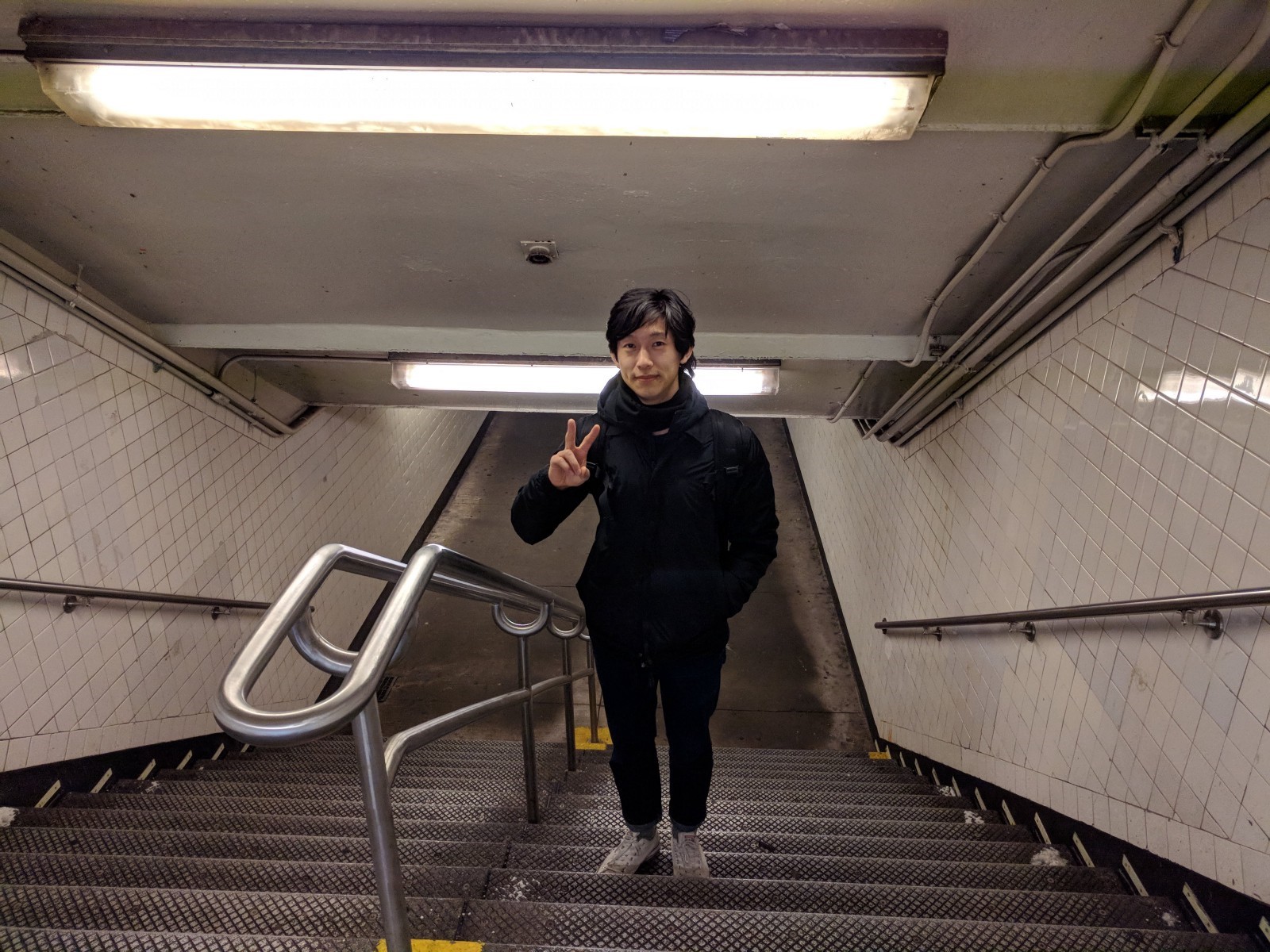
NYC Subway // March 2018 // https://chrispie.com/
My name is Joey Lee and I’m a Third Culture Kid (https://en.wikipedia.org/wiki/Third_culture_kid). Throughout my life I’ve developed personally between cultures — as a Korean-American/foreigner — and unsurprisingly and professionally between disciplines — as a designer and researcher. Despite the never ending existential questions, I’ve found that I’m happiest in the mash-up between these spaces I’ve been occupying. It’s perhaps why I found a home somewhere in between geography and design/new media.
Geography has more to do with articulating the right questions
about the world, rather than having the answers to those questions
By training, some might consider me to be a capital “G” Geographer — I studied geography at UCLA (B.A.) and UBC (M.Sc), worked on developing new ways of mapping Greenhouse Gas Emissions in cities (with Dr. Andreas Christen), and gained a deep appreciation for critical perspectives (https://en.wikipedia.org/wiki/Critical_geography) and a strong foundation in spatial thinking. Through my experiences in Geography, I learned to consider everything, to ask more and better questions, and to be thoughtful about the ways my work (and the work of others) affects people and places. For me, Geography has more to do with articulating the right questions about the world, rather than having the answers to those questions. While as a geographer I might not have the answer to all of the world’s pressing questions, at least I will have (hopefully) unpacked more thoughtfully than most, where, how, and why those questions are being expressed. After all, you can’t solve a problem if you don’t know what the problem is in the first place. All that being said, the lens of geography is critical for what I do, but it’s fitting to say that I’m not “doing geography”.
From what I’m seeing, expressing new and critical perspectives
from the arts, humanities, and social sciences about/using
technology is what the world could use more of.
In practice, my work looks closer to that of an interaction designer (https://www.interaction-design.org/literature/book/the-encyclopedia-of-human-computer-interaction-2nd-ed/interaction-design-brief-intro) and creative technologist (https://en.wikipedia.org/wiki/Creative_technology). Underlying my work is always an element of research, but my focus is in examining and developing interactions between people and technology/data/information/space. This often means I’m prototyping new digital products (e.g. web applications, https://en.wikipedia.org/wiki/Web_application) and services (https://en.wikipedia.org/wiki/Service_design), making data visualizations or graphics, and developing the tools (e.g. software) to do so. Whether I’m self-employed working on behalf of an organization or working in one, my work often takes the form of visual and interactive things to help people better access information, experiences, and discussions. I certainly don’t believe technology will save the world, but I do believe that developing a strong technological literacy (https://en.wikipedia.org/wiki/Digital_literacy) is more important than ever for understanding how we are both affected by and can create affective new (digital) media. In a nut shell, I spend a lot of time sketching, reading, writing, talking with people, coding, and building proofs-of-concepts (https://en.wikipedia.org/wiki/Proof_of_concept) for the work that I do. You don’t have to study computer science or engineering (see: https://www.youtube.com/channel/UCvjgXvBlbQiydffZU7m1_aw) to make meaningful interactions with technology and actually quite the contrary. From what I’m seeing, expressing new and critical perspectives from the arts, humanities, and social sciences about/using technology is what the world could use more of.
Among other things, I am currently teaching as an adjunct lecturer at New York University’s (NYU) Interactive Telecommunications Program (ITP) (https://tisch.nyu.edu/itp) — a program in the Tisch School of the Arts (http://tisch.nyu.edu/) focusing on the intersections of new and emerging technology and society. Some of the topics the students are currently exploring are the ways people are engaging with personal data quantification (https://en.wikipedia.org/wiki/Quantified_self, virtual and augmented reality experience, and machine learning and artificial intelligence.
For more, keep reading.
Past
From an early age, I was exposed to the ways in which subversion
and protest could be manifested in performance and art.
I wasn’t always a designer or a geographer or interested in or literate in computers. In fact, its fair to say that my early relationship with technology was rather fraught; the family computer was the oppressive medium through which endless hours of Standard Aptitude Test (SAT) prep was delivered to me. Computing and I have since become much better friends.
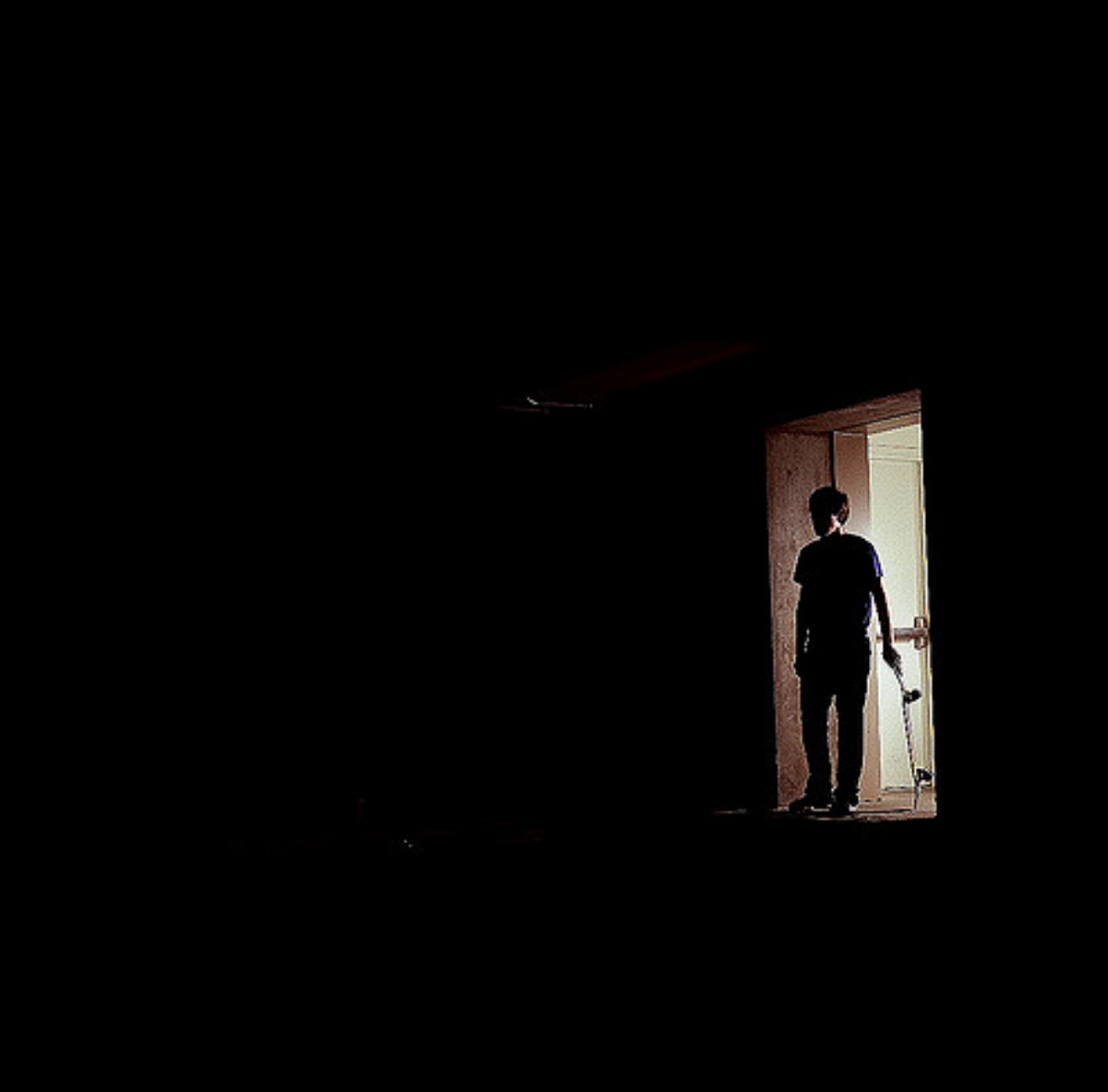
UCLA // ~2009
The root of my unlikely interest in geography and design might be best rooted in my exposure to skateboard culture. Through skateboarding I learned about photography, image making, and what it meant to be part of a subculture. From an early age, I was exposed to the ways in which subversion and protest could be manifested in performance and art. It’s through skateboarding that I developed my first touch points with spatial thinking, notions of territoriality, urbanism and spatial (re)appropriation. Skateboarding gave me a universal language to communicate with people in foreign places and helped me to find community when I finally moved away to attend university at UCLA; where I fell into Geography after jumping between fine art, French studies, urban planning, and anthropology. I might even go as far as to say that the grittiness of skateboarding helped me to survive the three weeks of fieldwork I did in Puerto Rico as part of my Bachelor thesis which examined the variability of soil-respiration in urban forest and grass sites (shout out to Dr. Daniela Cusack for giving me a chance to be a scientist). Funny enough, it was perhaps my “PechaKucha” (https://en.wikipedia.org/wiki/PechaKucha) presentation on how skateboarding has shaped my view of cities that helped me get my first job as a researcher at MIT’s Senseable City Lab (http://senseable.mit.edu/) after graduating from my Bachelor’s degree in 2012.
…it was perhaps my “pecha kucha” presentation on how skateboarding
has shaped my view of cities that helped me get my first job as a
researcher at MIT’s Senseable City Lab
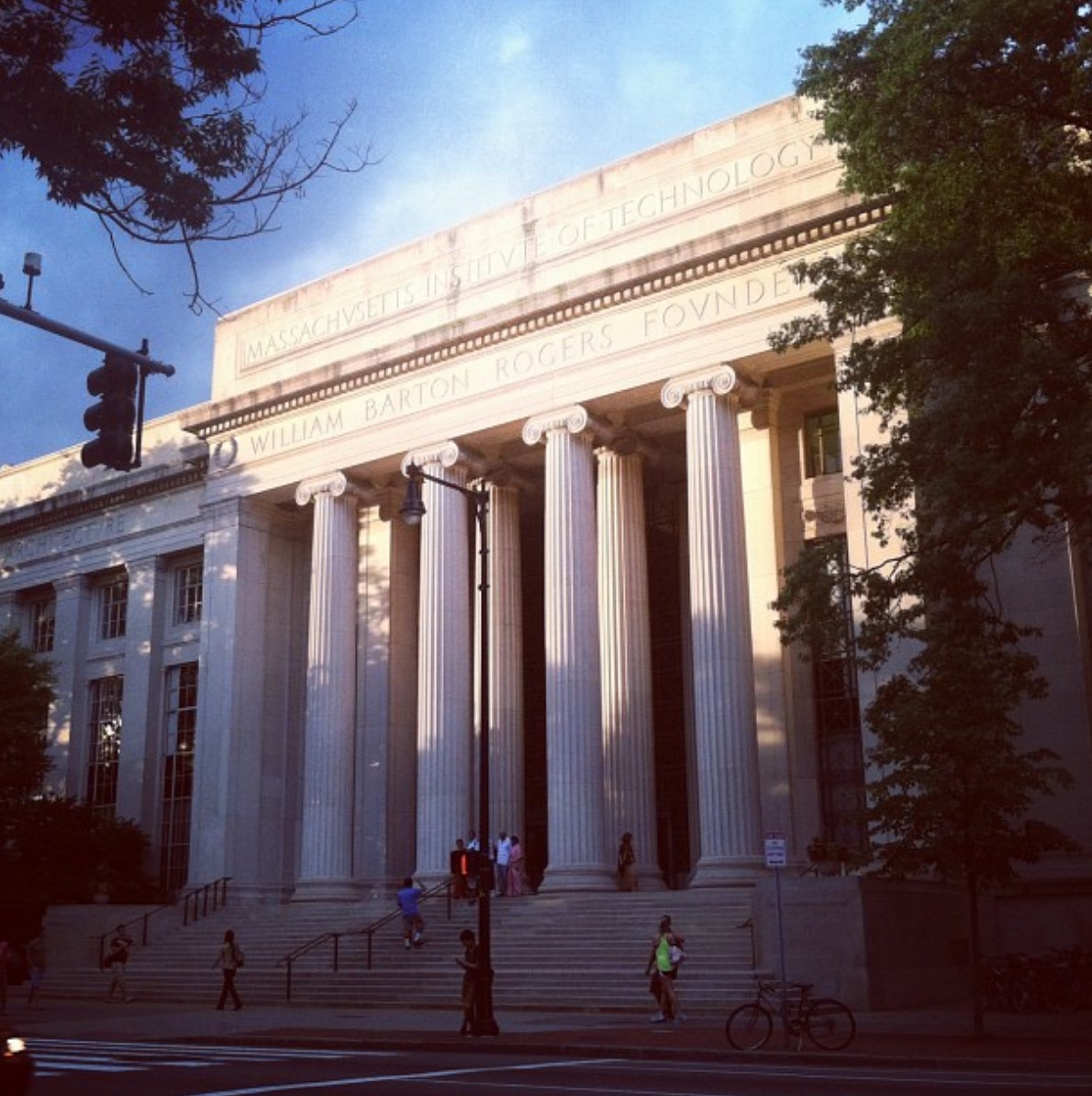
77 Mass Ave // MIT // ~ June 2012
Working at MIT, I was lucky to find myself in a group of people who supported my learning and rooted for me as I was beginning to discover the many ways that society, technology, data, and computation were all messily intertwined. It was also where I met Benedikt Groß (http://benedikt-gross.de/log/) a computational and speculative designer (https://mitpress.mit.edu/books/speculative-everything), who quickly became my mentor and friend. Since 2012, Benedikt and I have worked on projects mapping pools in LA (http://benedikt-gross.de/log/2013/06/the-big-atlas-of-la-pools/) to letterforms in aerial imagery (http://benedikt-gross.de/log/2016/03/the-aerial-bold-project/), and more. Through our collaborative works, he helped me to grow into the world of interaction design and media art (https://en.wikipedia.org/wiki/New_media_art) and to discover how to integrate design and computation into my practice as a researcher. Suffice it to say, I could not have forecast the trajectory that our relationship would set until now. In parallel with my growing interest in interaction design was also when I came across the work going on in the urban climate community (https://en.wikipedia.org/wiki/Urban_climatology). I was fascinated by the ways in which people and the pulse of a city could lead to unique expressions of phenomena like greenhouse gas emissions and energy use. Towards the end of my time at MIT, I applied to study with Dr. Andreas Christen (formerly at UBC, now in Freiburg, http://www.meteo.uni-freiburg.de/en/team/prof-dr-andreas-christen) to pursue work on urban climate research and soon after I started my life in Vancouver.
Maybe it is that we’re all just misfits in Geography, but I’ve
been hard pressed to find a more eclectic, yet coherent group
of socially conscious, caring, and thoughtful people.
I look fondly at my time at UBC Geography. Along with having a tremendous number of opportunities to engage with cutting edge research and to spend time with some of the most inspiring faculty and staff of any institution I’ve been part of, it was also where I made some of my most meaningful friendships and life experiences. Maybe it is that we’re all just misfits in Geography, but I’ve been hard pressed to find a more eclectic, yet coherent group of socially conscious, caring, and thoughtful people. There are few places that I can imagine having the opportunity in one department to be exposed to research spanning from war law (https://warlawspace.wordpress.com/) and youth radicalization (https://elnolan.wordpress.com/2017/11/09/phd-geography-ubc/) to geospatial web communities (https://twitter.com/mappingmashups?lang=en) and methane fluxes in the arctic (http://ibis.geog.ubc.ca/~achristn/#group). It’s funny to think about how many discussions we had trying to figure out how we as a department could create more overlaps between human and physical geography, and while yes, more collaborations would be great, UBC Geography’s greatest strength is in its unique mashup.
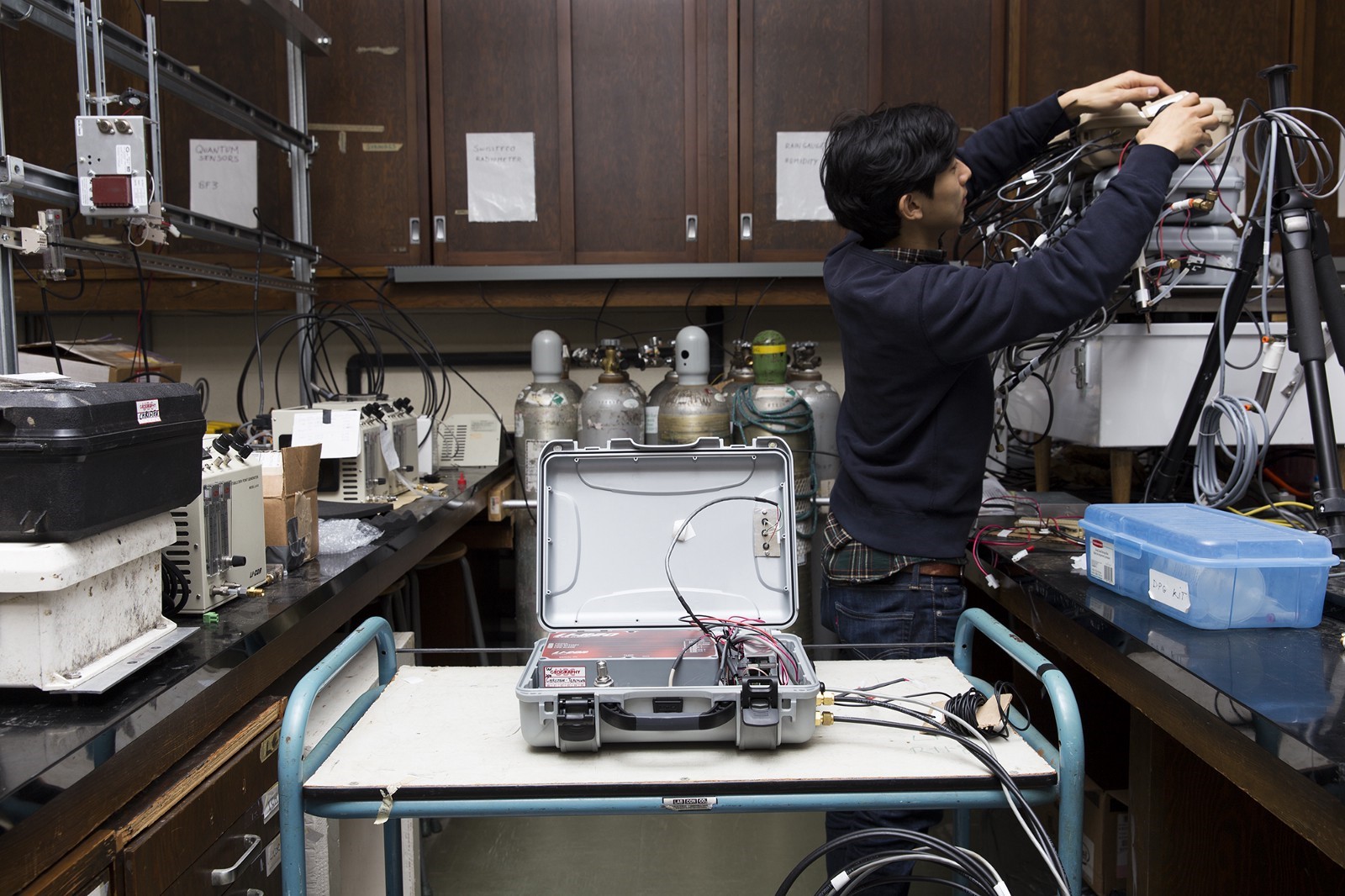
UBC // ~ May 2016
All fuzzy feelings aside, UBC provided me with an incredible platform. During my master’s I had the opportunity to be part of the Terrestrial Ecosystems Research and World Wide Broadcast (TERREWEB) program, work as map designer at the Centre for Advanced Landscape Planning (CALP), present at a number of international conferences, publish my work in peer-reviewed journal, and develop my computational skills. Most importantly, my supervisor gave me room to grow and explore professionally while keeping me on track and focused. This was especially evident towards the end of my master’s research when I was awarded with Mozilla’s Open Science Fellowship (https://science.mozilla.org/programs/fellowships) which allowed me to develop more awareness and capacity for doing science more openly, using reproducible methods, and increasing public access to research.
…the Open Science fellowship exposed me to a previously
uncharted world of the ways in which the internet, albeit
an open and accessible one, is changing all realms from
science to journalism to art and design.
The Mozilla Open Science fellowship came at a perfect time as I was trying to figure out how to stitch together my interests in open source, computation, and increasing public access to science. Led by Kaitlin Thaney (https://kaythaney.com/) (and now Stephanie Wright, https://science.mozilla.org/people), the Open Science fellowship exposed me to a previously uncharted world of the ways in which the internet, albeit an open and accessible one, is changing all realms from science to journalism (https://opennews.org/) to art and design. In a time when my master’s work was beginning to narrow my domain expertise, the fellowship created an innumerable amount of opportunities where I could contribute my learning and expertise to others. More details of my fellowship experience can be found here (https://science.mozilla.org/blog/ff-joey).
One of the takeaways of the fellowship was that before I could make science better, I’d have to become a better designer and builder of things. In my experiences working with Benedikt (mentioned above), I’d seen the great power in having a process and tools to make your ideas tangible. In other words, design was a means of making things visible, communicable, and to have affect. So when I was offered a position to work with Benedikt, Raphael Reimann (http://lab.moovel.com/people/raphael-reimann) and Tilman Hauser at the moovel Lab (http://lab.moovel.com/) — a small team of designers, artists, researchers exploring future mobility scenarios through design — in Stuttgart, Germany, I took the opportunity.
…my experience in Germany was a tough, but great one,
filled with lots of loveand support from new and old
friends, disco music, Bretzeln, and travels.
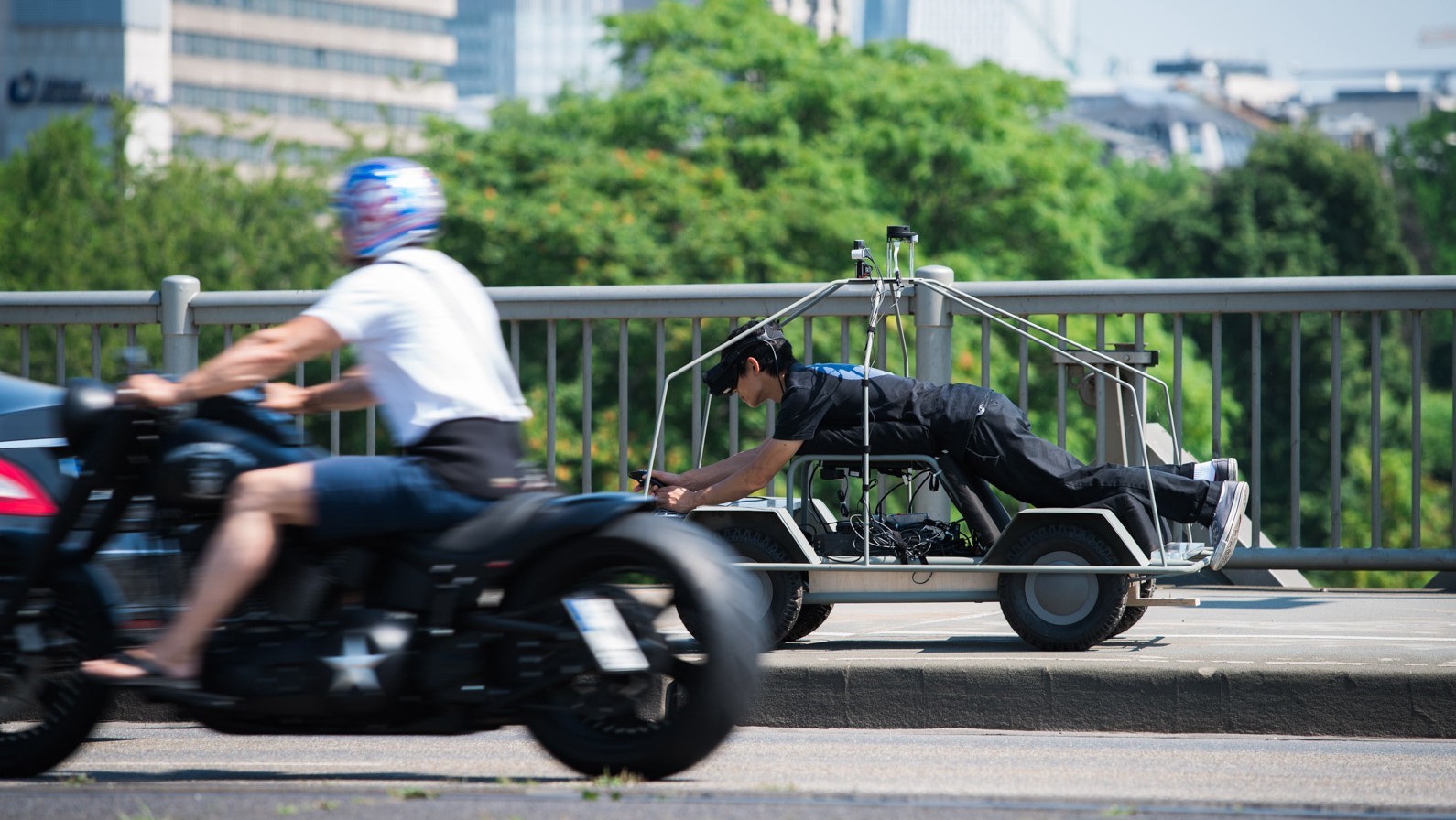
Who Wants to Be A Self-Driving Car?
My experience at the moovel Lab challenged me to raise questions about what mobility in cities looks like now and what it could look like in the future. As the Lab’s explorations always took some kind of tangible form, whether digital, physical, or both, I had a number of opportunities to work through the process of concepting to implementation. I learned how to approach design projects more professionally and expanded my vocabulary as a designer to consider more deeply the “user experience”. The projects we did in the Lab were funky (e.g. Who Wants to Be A Self-Driving Car?, http://lab.moovel.com/projects/self-driving), but I won’t soon forget how to work through complex projects sitting on the “bleeding edge” of our current engagement with technology. I should also mention that my experience in Germany was a tough, but great one, filled with lots of love and support from new and old friends, disco music (https://soundcloud.com/st_malo), Bretzeln, and travels. I was lucky to find a home in an unlikely place with a set of misfits, but this seems to be the recurring theme in my life thus far.
Since the 2018 New Year and for the first time in 6 years, I’m back living in the U.S.A., now living and working in New York City.
Future
I see my next steps to build more access to and public
engagement with thoughtful and meaningful media
This may seem like unusual career trajectory, but I’ve met more and more people over the last years who are able to create a coherent narrative out of the chaos that is their professional/life histories. Maybe the trick has always been to run in a direction until you’re far enough to decide if that thing is right for you. It certainly feels like I’ve changed directions over the years.
So what’s next?
As I continue to develop my practice as an interaction designer, I hope to do more work to help organizations and the public critically engage with science, technology, and new media. Whether that means moving more towards data journalism, graphics and visualization, and/or education, I see my next steps to build more access to and public engagement with thoughtful and meaningful media. Fingers crossed!
If you’ve made it this far, thanks for reading.
you can find me here:
portfolio: jk-lee.com
twitter: @leejoeyk, https://twitter.com/leejoeyk
linkedin: @joeyklee, https://www.linkedin.com/in/joeyklee/
github: @joeyklee, https://github.com/joeyklee
 Follow
Follow